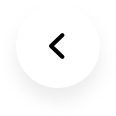Nabuqi
China
Born in Inner Mongolia in 1984, Nabuqi graduated from the Central Academy of Fine Arts in 2013, and currently lives and works in Beijing. Both the things we see as real and the psychological nature of our interaction with objects and matter have been long-standing themes in Nabuqi's artwork. Ranging from handmade sculptures to installations made from assembling readymades, there is a pull for the viewer to engage with detail and context, to be attuned to and reflect upon the spectrum between artificial and actual. As such, Nabuqi creates realms that prompt our understanding of the world around us and engage us in a play of spatial politics. Nabuqi plays with the optics and spectrum of observation, the programming that we accept as well as question. By discussing familiar themes such as nature and private space, she draws the viewer into a discourse on "presence" that allows the viewer to reflect on the way they perceive the present, past and future states of the things they face. Nabuqi’s elaborate installations thus point to our epistemological idiosyncrasies and prompt, with wit and theatricality, a reflection on our established mode of thinking. Her recent exhibitions include the 58th Venice Biennale (Venice, 2019); Cold Nights (UCCA Art Centre, 2017); Absent Paragraph (Museum Beelden aan Zee, 2017); Any Ball (CAFA Art Museum, 2017), Why Not Ask Again? Arguments, Counter-arguments and Stories, the 11th Shanghai Biennale (2016) and The Eighth Climate (What Does Art Do?, the 11th Gwangju Biennale (2016). She has been nominated for the 2016 Art Sanya Huayu Youth Award.










